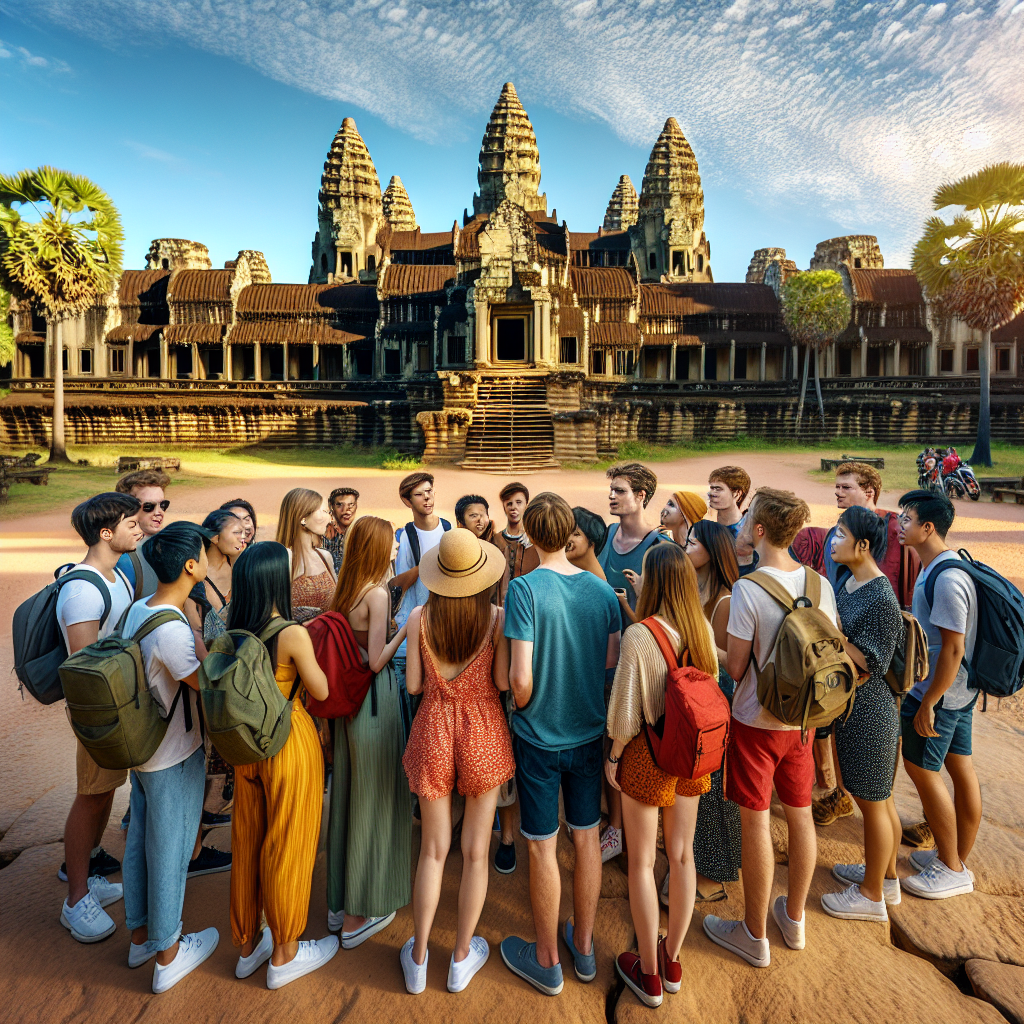Top 10 Must-Visit Historical Sites in Cambodia for Young Travellers
Cambodia, a country with a rich tapestry of history stretching back thousands of years, offers young travellers a unique blend of adventure, culture, and historical exploration. From the ancient temples of Angkor to the somber sites of recent history, each location provides a glimpse into the past that has shaped this vibrant country. Here’s a guide to the top 10 must-visit historical sites in Cambodia that promise to enrich your travel experience.
1. Angkor Wat
No visit to Cambodia is complete without witnessing the awe-inspiring beauty of Angkor Wat. Built in the early 12th century, this temple complex is the largest religious monument in the world and represents the pinnacle of Khmer architecture. Its bas-reliefs, grand towers, and reflective pools offer endless exploration opportunities, especially at sunrise when its beauty is unmatched.
2. Bayon Temple
Located in the heart of Angkor Thom, Bayon Temple is famous for its serene and smiling stone faces that adorn its towers, gazing out in all directions. Built in the late 12th or early 13th century, its intricate bas-reliefs depict historical events and everyday life, offering a window into the past.
3. Ta Prohm
Ta Prohm, known to many as the ‘Tomb Raider temple,’ has been largely left to the clutches of the surrounding jungle, creating a mystical atmosphere. Its crumbling towers and corridors interwoven with the roots of giant banyan trees create a sense of adventure and discovery.
4. Preah Vihear
Perched atop a cliff in the Dângrêk Mountains, Preah Vihear is a stunning Hindu temple that offers breathtaking views across Cambodia and Thailand. Dating back to the first half of the 11th century, its remote location and historical significance make it a fascinating visit.
5. Banteay Srei
Often called the ‘Jewel of Khmer Art,’ Banteay Srei is renowned for its intricate red sandstone carvings and stunning bas-reliefs. Located about 25 km northeast of the main Angkor complex, this 10th-century temple is dedicated to the Hindu god Shiva and is a masterpiece of Khmer architecture.
6. Phnom Penh’s Royal Palace and Silver Pagoda
The Royal Palace in Phnom Penh, with its classic Khmer roofs and ornate gilding, offers a glimpse into the royal history of Cambodia. Adjacent to it is the Silver Pagoda, named for its floor of over 5,000 silver tiles, housing many national treasures including gold and jeweled Buddha statues.
7. Killing Fields of Choeung Ek
A visit to the Killing Fields of Choeung Ek provides a somber reminder of Cambodia’s recent past under the Khmer Rouge regime. The site serves as a memorial to the victims, with a stupa filled with the skulls of the dead standing as a poignant reminder of the atrocities committed.
8. Tuol Sleng Genocide Museum
Formerly a high school, Tuol Sleng was transformed into Security Prison 21 (S-21) during the Khmer Rouge regime. Today, it serves as a museum, its classrooms-turned-cells and torture chambers a haunting reminder of the suffering endured by the Cambodian people.
9. Sambor Prei Kuk
Nestled within a forest, the pre-Angkorian temple complex of Sambor Prei Kuk dates back to the 7th century. It is one of the oldest archaeological sites in Cambodia, offering a unique look into the country’s early history and the roots of Khmer architecture.
10. Kratie
While not a historical site in the traditional sense, the town of Kratie offers a slice of life along the Mekong River and is one of the best places to see the rare Irrawaddy dolphins. The town’s French colonial architecture and serene riverside setting provide a peaceful retreat from the more touristic sites.
Recreating the Experience
Returning home, travellers can recreate their Cambodian adventure by cooking traditional Khmer dishes, such as Fish Amok or Beef Lok Lak, and sharing stories of their journey. Hosting a Cambodia-themed evening, complete with a slideshow of photographs and traditional music, can bring a piece of this enchanting country into your home.
FAQ
How should I dress when visiting these sites?
Respectful attire is important, especially in religious sites. Shoulders and knees should be covered. Lightweight, breathable fabrics are ideal due to Cambodia’s warm climate.
What is the best time to visit these historical sites?
The best time to visit Cambodia is during the dry season from November to February when temperatures are cooler and there is minimal rainfall.
Is it safe to travel around Cambodia?
Cambodia is generally safe for travellers, but like anywhere, it’s important to take standard safety precautions. Keep valuables secure and be aware of your surroundings.
How can I get around these sites?
For the Angkor complex, hiring a tuk-tuk for the day is popular and affordable. For farther sites like Preah Vihear, consider renting a car or joining a guided tour.
Do I need a guide to visit these sites?
While not strictly necessary, hiring a guide can enrich your experience with insights into the history and culture of each site. Many guides are available at the main tourist sites.
Can I take photos in these historical sites?
Photography is generally allowed, but be respectful, especially in places of worship or at somber sites like the Killing Fields and Tuol Sleng Museum. Look out for signs indicating restricted areas.
Visiting Cambodia’s historical sites offers a journey through time, from the grandeur of ancient empires to the resilience in the face of recent tragedy. Each site shares a story of the past, inviting travellers to reflect on the complexities of history and the enduring spirit of the Cambodian people.
